
Natalie Berry examines the increasing emergence of climbing-related clothing and accessories in the collections of high-end fashion houses, the politics of finance-bro fleeces and why all the cool kids are getting down with 'gorpcore'...
Designers are mimicking climber-style like it's going out of fashion. Carabiners on the catwalk, gorpcore in the streets: the looks, fabrics and paraphernalia associated with climbing and the outdoors are turning heads. Louis Vuitton chalkbags have a price tag of £1,020 (or £1,300 in black). Ralph Lauren stamp 'CLIMB' and 'ALPINE' on retro pieces. Prada dabbles in technical fabrics. Elsewhere, 18 karat gold diamond-encrusted carabiners bear a load(ed) rating of $18,000. In street parlance, climbing has become 'Gucci.'
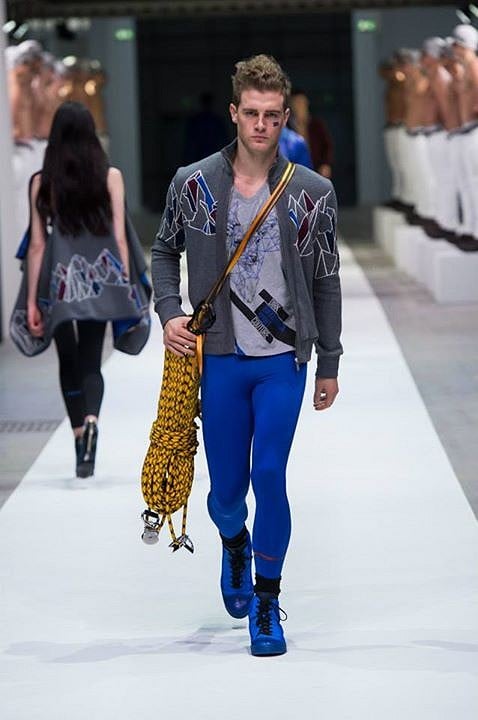
That big labels are tailoring their collections using inspiration from activewear is nothing new; designers have long appropriated elements from traditional leisure pursuits such as tennis, polo and athletics upon their advent and uptake. Since the '90s, extreme sports with their anarchic, counter-cultural vibes and unconventional garb have cut an attractive figure for designers to sketch from, mixing the form and function of surf, skate and snowsports wear with an edgy appeal.
Looks to Die For
In 2019, though, fashion has reached peak extreme. Putting it bluntly, 'If You Can Get Killed Doing It, Fashion Wants It', as the headline of a recent New York Times Style article reads. The newspaper's Culture and Style reporter, Guy Trebay, opens the piece with a paragraph referencing Alex Honnold's solo of El Capitan and linking his daredevil ascent to the conception of Louis Vuitton's Chalk Nano bag in their autumn 2019 collection. This extravagant take on a £20 equipment staple was met with a mix of bewilderment and disdain from the climbing community, but it certainly wasn't a one-off. In recent season cycles, climbing and mountaineering have begun to 'infiltrate' the wardrobes of designer fashion houses as a continuation of the influences of conventionally cool extreme sports - the trendy triad of surfing, skateboarding and snowsports. High-profile designers and creative directors providing comment for Mr Trebay's article - including Prada heiress and head designer Miuccia Prada - confirm: 'adrenaline-rush niche' activities are pushing textile design as much as athletes are pushing the boundaries of these sports, with an aesthetic that appeals to city dwellers as much as outdoorsy types. High fashion is now looking to streetwear for inspiration, and incorporating the styles and fabrics flaunted by performance brands such as The North Face, Arc'teryx and Patagonia.
From a non-climber's perspective, the stereotypical idea of climbing attire likely conjures a 'dirtbag' image of holey t-shirts from the '90s, ripped baggy trousers and gaffer tape-bandaged down jackets with a whiff of scruffy minimalism; hardly the pinnacle of sartorial elegance. Others might be permanently scarred mindful of the short shorts, headbands and tight and bright Lycra craze of the '70s and '80s. Although earlier climbers and mountaineers were long obliged to beg and borrow from mainstream fashion and military garb before specialist or sports clothing existed - think tweeds, stockings, gabardines and corduroy slacks - bucking the general trend of looking vaguely presentable would appear to be the stereotyped climber's forte from around the '50s onwards, so how have we ascended to the height of fashion?
In an email exchange, Trebay is quick to point out how climbing in fact proved to be an exception to the general rule of sports style. 'I was amused to learn how much historically it was the sport that absorbed fashion influences rather than the other way around: those Lycra tights in the '80s!' he wrote. Those Lycra tights indeed. Women and men alike embraced the very tight and the very bright, from Catherine Destivelle's leotard-leggings combo to the toothpaste tights and short shorts of some of the sport's leading figures. The aerobics craze of the '80s led to a Spandex spree, which climbers embraced out of both practicality and look. Ben Moon, sport climbing pioneer and Moon Climbing apparel and accessories founder, remembers the origins of the trend in the UK. 'Jerry came back from a climbing trip in Germany in 1983 sporting a pair of red tights with white stripes down each leg which looked cool. I think he was copying US climber John Bacher, who also wore tights. Jerry had been in the States climbing with John and I think Jerry was heavily influenced by him as one of the best climbers in the world,' he explained.
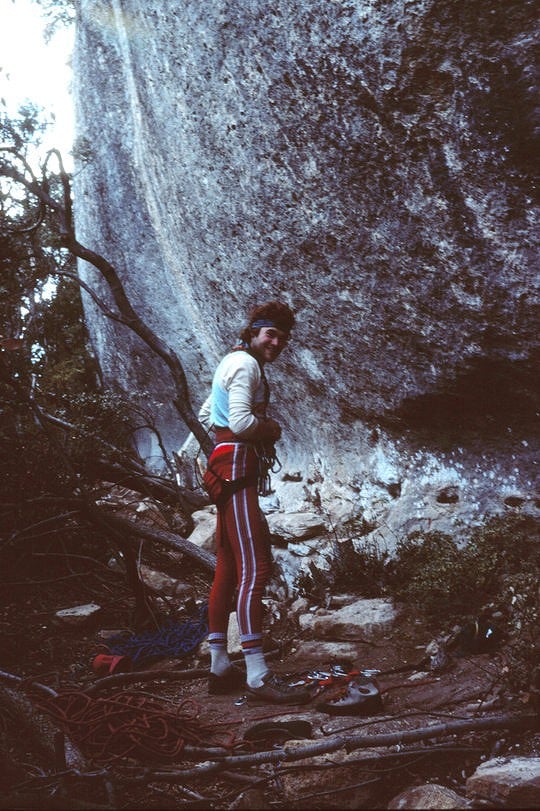
A frantic search for Spandex ensued. 'Christian Griffith and I went to Germany in 1984 and visited shops in Nuremberg trying to find Jerry's tights, but to no avail. We ended up buying some others. Everyone in Sheffield started wearing tights and it spread,' Ben continued. After the gaudy colours and patterns of the '80s, muted tones were more à la mode in the '90s, resulting in a resurgence of the Ron Hill Trackster running pant, which was a popular choice for climbers from its launch in the '70s onwards, alongside the skimpy athletics shorts and rugby shirts of the time. Before founding Moon Climbing, Ben owned a company called S7 and in 1995 launched a baggy climbing pant, in-keeping with the spread of skate culture, but with different origins. 'It was actually modelled on a really cool army style pant I owned,' Ben said. 'In the '90s lycra went out and baggy came in. The pant is still in my range today and is the best-selling Cypher pant.'
For men, tight trousers aren't bursting back onto the scene - or bursting at the seam - thankfully, but women in climbing walls and at crags around the world are embracing the freedom, elasticity and aesthetics of the legging (thank goodness for the gusseted crotch!) and very short, tight shorts. Women in the US are now buying more elasticwear than jeans, as comfort and practicality are prioritised and dress codes relax across different social spaces. 'I don't know if tights for men will come back into fashion,' Ben said, 'but I did climb Rainshadow 9a in a pair of black tights in 2015.' The growing popularity of yoga, Crossfit and spin classes with their demand for stretchy, close-fitting activewear has diffused into the climbing scene, as newcomers bring their style from the fitness gym as part of the athleisure - wearing workout clothes in other settings - trend. It's a reality witnessed by Sam Stephenson, Head of Design and Development at Mountain Equipment, who introduced bright leggings and crop tops to the brand's staunchly mountaineering-focused range last season. 'The notable trend of late has been the rise of non climbing-specific brands down the wall, such as adidas and UnderArmour as new climbers without the cultural baggage enter the sport,' he confirmed.
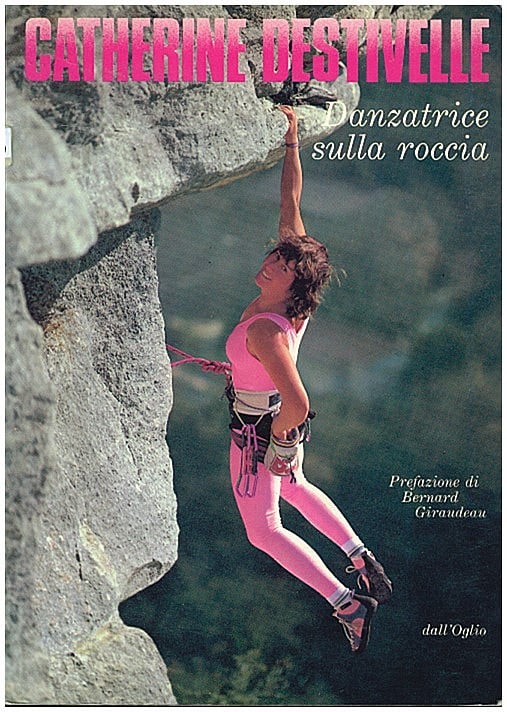
We are what we wear - or at least, we think we are what we wear. Clothing projects an image of status, cultural allegiances and tastes. It's a form of social armour and how climbers choose to dress has long been defined by its counter-cultural, off-the-wall reputation. Through his work, Sam has paid meticulous attention to how climbing fashion relates to mainstream trends over the years. 'I'd say the evolution of style in climbing is always about conflict of the subcultural identifier aspects of dress versus the general trend. There is a constant ebb and flow as different elements come to the fore,' he explained. 'These days, I think the subcultural aspects are less important as climbing itself becomes less of a subculture and people have more tools for self-creation, such as how they portray themselves on Instagram.' Sam's impression is that climbing 'fashion' now broadly follows mainstream trends, but with a lag. 'So, as the mainstream men's fashion for trouser width moves away from superslim towards baggy and short, so will climbing fashion,' he commented.
'Whereas in the past people would use specific styles to stand out, now brands are more significant, so most fashion-aware climbers - usually claiming to buy their own style, but nevertheless broadly mirroring current trend - are happiest buying silhouettes in line with current mainstream trend, but that are made by a brand that identifies as a climbing brand,' Sam explained, adding that most new climbers won't wear baggy styles since they are not a fashionable silhouette. 'The silhouette can trump a brand's climbing cachet,' he said.
All the Gorpcore, No Idea
But for those who have no intention of climbing walls nor mountains, what's the appeal of having all the clothing gear to summit an 8,000 metre peak, but no intention of wearing it outside of the local high street? Streetwear has been the chosen attire of urban youth since its arrival on inner-city scenes in the '90s as hip hop stars scooped deals with sportswear labels, after RUN-DMC's song 'My Adidas' led to an influential collaboration with the brand. Elements of surf, skate and hip-hop culture mixed with sportswear - sweatshirts, trainers, caps - and eventually democratised luxury brands by showcasing more genteel outfitters from Ralph Lauren to Gucci. Today, the casual normcore - a neutral, comfortable dress code to avoid standing out - and athleisure trends have appropriated outdoorsy overtones to create gorpcore, a term coined in a 2017 article by New York Magazine's style offshoot The Cut. It might sound like a niche fetish that you probably shouldn't Google, but the word is an amalgamation of the North American acronym 'gorp', short for 'Good Old Raisins and Peanuts', AKA 'trail mix' and the 'core' of normcore, which originates from the word hardcore, meaning 'extreme'. Simply put, it's an extremely outdoorsy look, fit for the city.
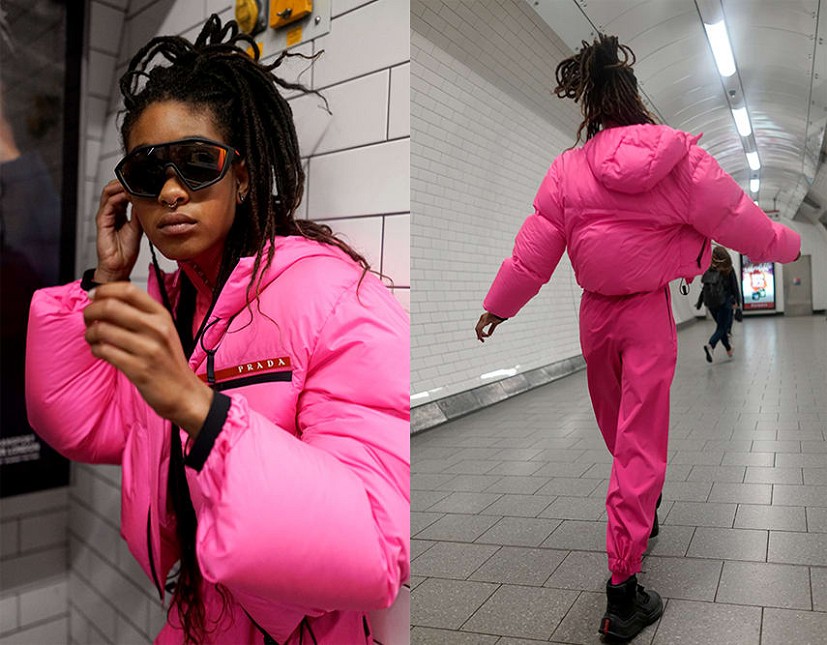
Brands traditionally considered 'outdoor' apparel manufacturers are now as ubiquitous in the city streets as they are on the highest peaks: The North Face and Berghaus dominate the scene in the UK, while in the US, big names such as The North Face, Columbia and Arc'teryx are making an appearance thanks to the influence of rap stars. Some looks are more avant-garde than others: rapper Pharrell wore a 'sleeping bag dress' by designer Italian sportswear brand Moncler on the cover of GQ's 'New Masculinity' issue this month, which was parodied by backcountry drag queen Pattie Gonia - who also had a very literal take on the tent dress - in an homage to both 'camping chic' runway styles and fashion's gender-fluid trajectory. In cities, young people wear technical parkas and fleeces with jeans in incongruous, androgynous combos that speak of adventurous aspiration with an urban grounding. Basically, as The Cut's article puts it, 'they all want to dress like they can tie a Yosemite bowline.'
Closer to home, British climbers will be familiar with the penchant of working class youth for wearing particular brands of outdoor clothing, which are often paired with items from conventional sports brands such as adidas, Nike and Lacoste. 'Chavs', 'NEDS' or whatever non-PC names society chose to call them, were and still are bedecked in Berghaus, The North Face and Helly Hansen, their jackets bringing colour and cultural camouflage to town centres across the UK. Perhaps the most famous piece of clothing most closely associated with working class youth culture is the classic Berghaus Mera Peak jacket, with its iconic yellow half-moon on the back. As a waterproof jacket with 'storm-level protection' which is 'ideal for trekking in all weathers', it's not hard to see why a sturdy waterproof would appeal to youths hanging out on street corners in British weather.
While the exact reasons behind the popularity of this specific jacket model are unknown, theories proposed by former chavs, outdoor instructors and shop owners point to an initial mass stock theft which cascaded into cheap resales and further thefts; its being the only Berghaus jacket to go down to a size XS and its having pockets big enough to hide bottles of Buckfast. 'I used to wear a Helly Hansen jacket to school over my Burberry shirt,' a Glasgow friend confides. 'It was bugger all to do with the weather. I wore it for the same reason folk drive BMWs or spend £80 on climbing trousers.' The jackets were accessible, practical and relatively affordable while nonetheless boasting a much bigger price tag than a supermarket own-brand. As with any level of society, clothes shape identities, which for the townie youth is largely one of perceived wealth despite their class, with protection from the elements rolled into one costume. After all, 'Fashion is the armour to survive everyday life,' as fashion photographer Bill Cunningham wrote in his memoir Fashion Climbing. Recognising its youth appeal, Berghaus is harking back to its retro 90s vintage and Newcastle roots with their new Dean Street collection. 'Embodying the feeling of nostalgia of past eras, the collection plays on the rave scenes of the 90s, Manchester Britpop and terrace culture with the styles incorporating logos and trims from each original piece,' culture website Mixmag declared.
But in 2019, 'gorpcore' isn't synonymous with disaffected youth. Its origins in winter 2016/17 lie in hip-hop culture, as rap icon A$AP Rocky wrapped up in an eye-catching orange Calvin Klein fleece and bright red Balenciaga puffer jacket for New York Fashion Week. While these outdoorsy 'costume' items with designer labels are unobtainable for the average street-goer, it was obvious that these pieces were cut from the same cloth and concept as high-spec designs from performance outdoor clothing companies. With outdoor stores in reach, the fashion-conscious emulated the looks of their icons by embracing waterproofs, fleece gilets and down jackets fit for 8,000ers. Recognising this trend, outdoor brands have arranged 'collabs' with high-end streetwear brands such as Supreme, which is famous for its highly sought after, limited edition product 'drops' in conjunction with big labels and/or specific designers and celebrities. Brands are 'crossed' like breeding animals to create unique fashion pieces with a sought-after logo: Supreme x The North Face Summit Series jacket goes back to 2007 and is amongst the more adventurous hybrid progenies, and has become, according to fashion website High Snobiety, 'one of, if not the, most popular of Supreme's regular collaborations.' The collaboration trend has big price tags, boosted by the scarcity of the often celebrity-endorsed products, which are bought at a high price and resold at a premium. A wealth of Japanese outdoor-inspired streetwear brands such as White Mountaineering bring GORE-TEX and technical knits to adidas products, while clipping carabiners to jumpers.
According to an article on style website fashionista.com, the carabiner is experiencing a 'quiet renaissance' in men's fashion. Forget your gear loops or bandoliers and grab yourself a jumper with an integrated racking system - and earrings to match. The article's title speaks of 'the enduring appeal' of the carabiner in menswear, which hopefully proves more robust than these unrated fashion accessories. In the article, Jacob Gallagher, columnist and men's fashion editor of the Off-Duty section of The Wall Street Journal, claims that menswear is currently 'obsessed with carrying sh*t' and incorporate the carabiner because of the 'stylistic appeal of its mountain climbing roots.' It's all part of a broader utility trend, from flannel shirts to 'fanny packs'. Virgil Abloh went one step further and incorporated climbing nuts on a carabiner to create the Medium Industrial Keychain ($335) for his label Off-White, while an iridescent carabiner was also designed for Louis Vuitton's accessory range in collaboration with a Japanese brand. Japanese fashion labels are 'at the epicentre of carabiner adoption,' with one brand spending over $18,000 on a gold carabiner adorned with diamonds. 'Outdoors Style' is a popular subculture in Japan, and now it's made its way west.
Why Are We All Pretending to Be Outdoorsy?, streetwear website Hypebeast asked this summer. Writer Emily Jensen suggests that this pretence has its roots in a longing for increasingly scarce free time. In glorifying capitalist work culture and constant connection, society has subverted the idea of luxury to mean that comfort, free time and nature are more valuable than extravagant clothes. 'The look's proliferation in cities like New York and London could easily be attributed to an overall relaxing of dress codes,' Jensen wrote. 'But the rise of outdoorsy style also runs parallel to the growing demand for sustainable fashion and, perhaps most importantly, a desire to escape our screens and connect with nature.' Sadly, the luxury of free time - and, one assumes, the disposable income to make the most of it - in the outdoors is increasingly becoming the reserve of the wealthy. Mirroring the aspirational dress code of working class kids in town centres, those dressing in attire that points to the hills evoke this recreational wealth, even if they've never left the city - just as those kids don't have the means to lead the luxury lifestyle signposted by their clothing. For the same reasons, gym clothing can now signify greater wealth - both economic and temporal - than fur coats and Gucci handbags.
Dressing for the Weather
As the worlds of corporations, finance and technology have collided, the expression of wealth and status has undergone a significant shift. Troy Patterson, The New Yorker culture writer and former style editor at Bloomberg, recently wrote an article titled 'Goldman Sachs, Patagonia and the Mysteries of Business Casual', in which he studied changes in men's business dressing dynamics. Patagonia clothing - fleece vests in particular - is a new player in business casual dress, while suits and ties gather dust in New York wardrobes. Dress codes may have relaxed, but there's nonetheless some sartorial signalling at play. Climbers, too, are privy to the brand's prices and prestige; the 'Patagucci' jokes are telling. But in business, the symbolism is different. 'The importance of the Patagonia vest,' Patterson wrote, 'is that it is both an evolution of the business-casual costume and a reversion to the waistcoat of the ancient three-piece suit.' In Manhattan, Patagonia has unexpectedly become embroiled in the unspoken, yet audible, 'enigmatic language of power' that business casual has come to represent. Wearing a fleece vest, Patterson explained, enables the wearer to sport another - often symbolically conflicting - layer underneath: a crisp shirt under a Patagonia fleece, or a smart jumper with an outdoorsy insulated vest on top.
So synonymous is the co-branded Patagonia fleece with bankers that parody accounts exist on Instagram. 'As the shadow banking world attempted to distinguish itself from the old establishment banking world, the basic garment of climber culture became the new jacket: cooler, tougher, a visual statement of being able to get it done,' Vanessa Friedman wrote for The New York Times. Once again, the label's outdoorsiness suggests access to leisure time filled with expensive, adventurous pursuits. It's ironic, however, that Patagonia's anti-capitalist ethos - with its widely publicised focus on repairing worn-out clothes and environmental protection - became so entwined with the financial technologies sector. In realising this, Patagonia announced this April that it would no longer seek new business with B2B companies, but forge relationships with environmentally conscious accounts instead. Despite divorcing themselves from these entities, it's likely that the brand will continue to play a role in the semiotics of business dress for as long as the fleece remains 'the right weight to meet the cultural weather,' as Patterson put it.
Yet there's also an environmental undertone to the obsession with outdoor wear, largely embodied in the Patagonia brand and carried forward by other outdoor companies as they follow suit. On a wider scale, the mainstream fashion industry as a whole is becoming eco-conscious, with an emphasis on avoiding unsustainable 'fast fashion', promoting longevity and shrinking wardrobes. 'Environmental panic has emphatically become an influence on fashion; a steady drumbeat of sustainability issued forth from fashion houses all across the spectrum in the season just past,' Guy Trebay of The New York Times wrote in an email. This is reflected most directly in the development of new fabric technologies and more transferrable fashion - as casual clothing becomes more acceptable in wider contexts - but also in the embrace of more hardy apparel in the face of a climate crisis. Outdoor brands are driving research in this area, from developing new, recyclable materials to eliminating PFCs from waterproofs. So mainstream are nanomembranes that The North Face recently celebrated the launch of its new FUTURELIGHT fabric with a performance by Grammy Award-winning songwriter Mura Masa and 'an elaborate art installation.'
Technology aside, it's perhaps inevitable that style will forever trump substance in the upper echelons of fashion, especially when it comes down to the finer details. 'While designers may be adaptive to technological advances that originate when athletes push to ever greater extremes in sport, the reality is when designers start deploying carabiners and chalk bags from climbing; neoprene from surfing; body armour from motocross in their collection it has little or nothing to do with their original context,' Trebay explained. 'They just like the look.'
Swedish fashion photographer and adventurer Emma Svensson, who blogs for Elle Magazine (Sweden), has witnessed the at times comical collision of her two spheres of interest to come to a similar conclusion. 'The most expensive department store in Sweden recently opened an entire sports and outdoor clothing floor with windows full of ice axes and an 8000m suit hanging from the roof, while a model wore La Sportiva Olympus Mons Cube boots in the street as promotion,' Emma said. 'At their annual fashion show, Matilda Söderlund climbed on a wall as the models went on the catwalk dressed in a North Face VE 25 tent and La Sportiva G2 SMs. The stylist had no idea what the shoes were for - "They just look cool!"' As a fashion world insider, Emma's observations call into question the #authenticity boasted in the shop's promotional material. 'At the same time, no-one in fashion even wants to go to the climbing gym because it ruins their nails,' she revealed.
From Rags to Riches?
If TV was pivotal in turning athletes into celebrities in the '60s, then the internet is a clear winner in the influencing stakes today. So influential is social media that brands appoint 'influencers' to flaunt their products, and outdoor brands have cottoned on to the trend. From top-level athletes to attractive, social-media savvy amateurs and the in-between, what people are wearing at the wall or rocking at the crag is more visible than ever. Despite Brexit, Britain is embracing loud 'Euro' colours in the mountains, going against the grain of historically neutral colours: Shale, Slate Grey and Burbage Brown. Fashion-conscious athletes are increasingly bedecked in sportswear by adidas - both on and off the wall - and some promote designer clothing and accessory labels: future Japanese Olympian Akiyo Noguchi and Chanel, for example. Meanwhile, her teammate Tomoa Narasaki recently posed for GQ Japan, suited and booted and accessorised with a flashy watch and chalked hands against a climbing wall backdrop in a striking juxtaposition of characters: Tomoa as both a rough-around-the-edges climber and style icon.
US teen prodigy Ashima Shiraishi - whose mother is a clothing designer and father a fashion-forward dancer - can be seen sporting her mother's eye-catching trouser designs on the wall and wearing Supreme merchandise and thrifted Gucci clothes around town. 'Ashima has been followed by sports press for her entire childhood, and now, as she grows into her own voice and sense of style, other audiences are starting to pay attention, too,' Romany Williams, Stylist and Editor at SSENSE magazine wrote in an interview. Ashima was deemed a 'hidden' hypebeast - a voracious trend-follower, who knows what's 'hype' and what's not - by HYPEBEAST.com itself, who wrote that her status as a pro rock climber makes her a most unexpected bearer of the title. 'Pro climbers aren't very fashionable. I feel like the climbers who are into fashion climb on the side,' she told the magazine, surmising that amateurs might be bolder than the pros and not as homogeneous in their clothing choices.
Other pro climbers have become victims of fashion as opposed to fashion victims. In 2016, one merger of climbers and expensive clothes was regarded as a clumsy faux pas. When GQ magazine 'took three premier climbers and a couple of cute friends' to Joshua Tree for a fashion photoshoot of the season's 'Crunchiest Designer Clothes', both the sexist standfirst and the awkward, self-conscious poses of Daniel Woods, Jimmy Chin and Sam Elias as female models watched from the sidelines - scantily clad and drenched with water - drew criticism. 'You chose to feature fashion models who not only have nothing to do with the sport, but within your piece are merely eye candy to accompany the men,' writer Zofia Reych argued in an open letter to GQ, while Outdoor Research flipped the shoot's old-fashioned gender roles in a fitting parody.
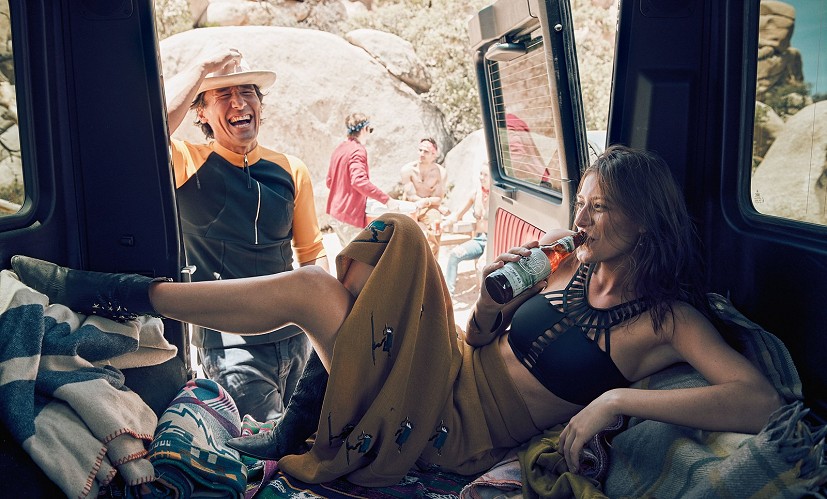
Although more accustomed to his usual costume of a red t-shirt paired with black trousers, Alex Honnold dressed for success at the Oscars this year in a sleek tux; a North Face number, designed by Mona Al-Shaalan of the brand's Black Series, in which, TNF says, 'high-quality outdoor-inspired silhouettes are translated for the urban setting.' Al Shaalan's background in designing for Alexander McQueen, Givenchy and Versace combined with wool and stretch cotton to create a striking one-off piece. Honnold's Free Solo film likely unwittingly played some role in the genesis of posh chalkbags and a carabiner craze, as designers ride on the coattails of the film's success.
The North Face aren't alone in jumping on the luxury urbanwear bandwagon: Arc'teryx launched their Veilance line in 2009, in which understated, but staple designs in technical fabrics attract wealthy businessmen and fashion followers with 'an adaptive range that can meet the demands of any environment.' Prada's recently relaunched sportswear-inspired Linea Rossa range, founded in 1997, features familiar fabrics in its 2019 Fall/Winter collection: Goretex Pro and Primaloft. 'This adoption of climbing and "technical" clothing by mainstream fashion will probably increase interest in true climbing brands by people who see themselves as or aspire to be "proper climbers"', Sam Stephenson of Mountain Equipment predicts.
But what general route will climbing style take? 'Overall, I expect climbing fashion to strongly mirror mainstream trend but with a growth in what were previously niche brands,' Sam suggested. He recognises one male competition climber as being ahead of the curve in climbing fashion, who shall remain anonymous. 'The last time I saw him in a competition, he was wearing a tucked-in polo shirt with slim fit chinos. Take note!' Sam advised.
As Tokyo 2020 approaches and Sport Climbing makes its Olympic debut, the cross-over between sportswear brands and designer labels and styles is bound to have room to stretch. Some athletes are ditching climbing brand sponsorship to partner with gymwear outfitters, recognising the potential for greater opportunities and desiring a more mainstream aesthetic and personal image. Climbing's growing popularity and its appeal as both an outdoor lifestyle sport and a nascent Olympic discipline make it a worthy investment and highly marketable; this season, Spanish designer brand Desigual featured a climbing wall as a backdrop in its sportswear marketing material.
Ain't no wall high enough. pic.twitter.com/ErXUR6TeVo
— .lɒυϱiƨǝꓷ (@desigual) September 11, 2019
In yet another '90s retro throwback, Ralph Lauren relaunched its Polo Hi-Tech range in 2018. 'ALPINE' and 'CLIMB' were stamped onto jumpers, bags and shoes with cord and carabiners to compete the looks, which were photographed and filmed at a crag. Unlike other designer brands who have arrived late to the outdoor fashion party, Ralph Lauren's Hi-Tech range has mountaineering roots. When US climber Ed Viesturs soloed Everest in 1993, he was outfitted in a red-blue-black suit with POLO SPORT as an unlikely logo. Ralph Lauren sponsored the expedition in return for product testing. 'I was the best-dressed climber on Everest, ever,' Viesturs reportedly commented at the time. The collection embodies 'a rugged sense of action and adventure,' their website claims, summing up the climbing hype: they want our 'look', they want our fabrics and they want our adventurous spirit. Fashionistas might give high praise to the form and/or function of outdoor gear, but the sense of freedom that climbing connotes is a form of cultural baggage that neatly accessorises and elevates its look.
In his book Fashion Climbing, Bill Cunningham wrote of mid-century fashion: 'One of the snags of high fashion is that it attracts the most ambitious social climbers.' Now, it seems, high fashion has been knocked down a peg, with the trope of non-conforming, anti-social climbers unexpectedly trendsetting and democratising the fashion world, in a more rugged reincarnation of '90s sportswear scenes. Rich people wear jogging bottoms, poor people wear high-spec waterproofs, cool people have chalkbags and climbing legends will always secretly want to whip 'those Lycra tights' out of the bottom drawer...
- SKILLS: Top Tips for Learning to Sport Climb Outdoors 22 Apr
- INTERVIEW: Albert Ok - The Speed Climbing Coach with a Global Athlete Team 17 Apr
- SKILLS: Top 10 Tips for Making the Move from Indoor to Outdoor Bouldering 24 Jan
- ARTICLE: International Mountain Day 2023 - Mountains & Climate Science at COP28 11 Dec, 2023
- ARTICLE: Did Downclimbing Apes help Evolve our Ultra-Mobile Human Arms? 5 Dec, 2023
- ARTICLE: Dàna - Scotland's Wild Places: Scottish Climbing on the BBC 10 Nov, 2023
- INTERVIEW: Loki's Mischief: Leo Houlding on his Return to Mount Asgard 23 Oct, 2023
- INTERVIEW: BMC CEO Paul Davies on GB Climbing 24 Aug, 2023
- ARTICLE: Paris 2024 Olympic Games: Sport Climbing Qualification and Scoring Explainer 26 Jul, 2023
- INTERVIEW: Malcolm Bass on Life after Stroke 8 Jun, 2023



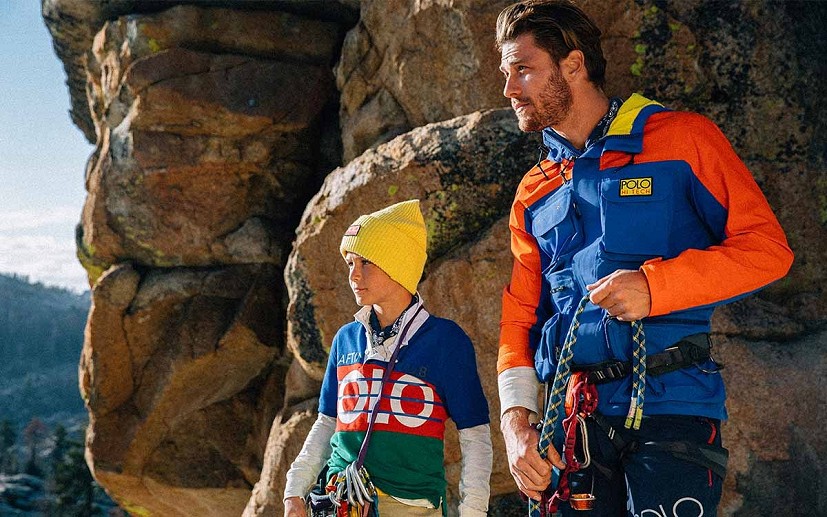
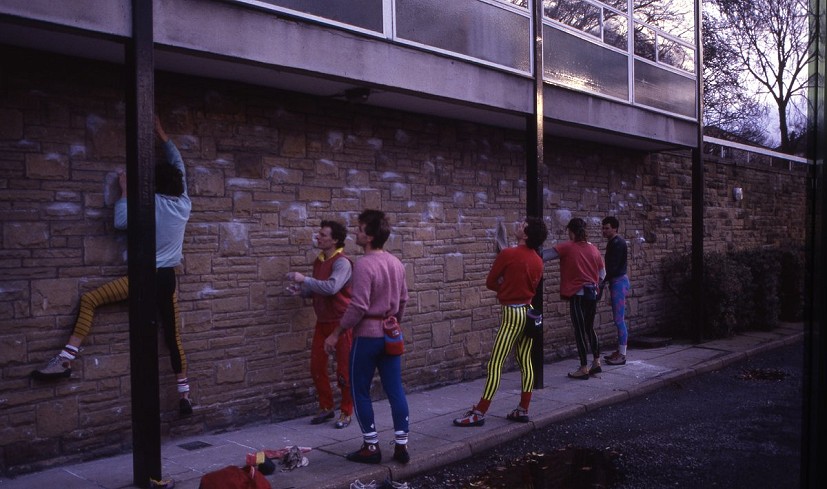
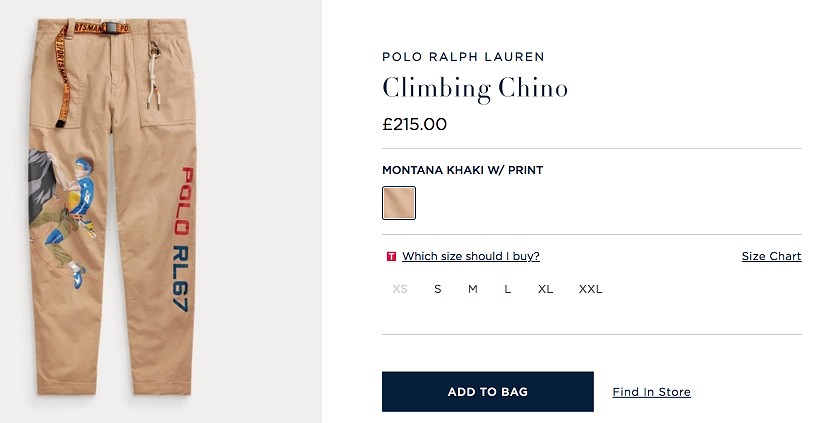

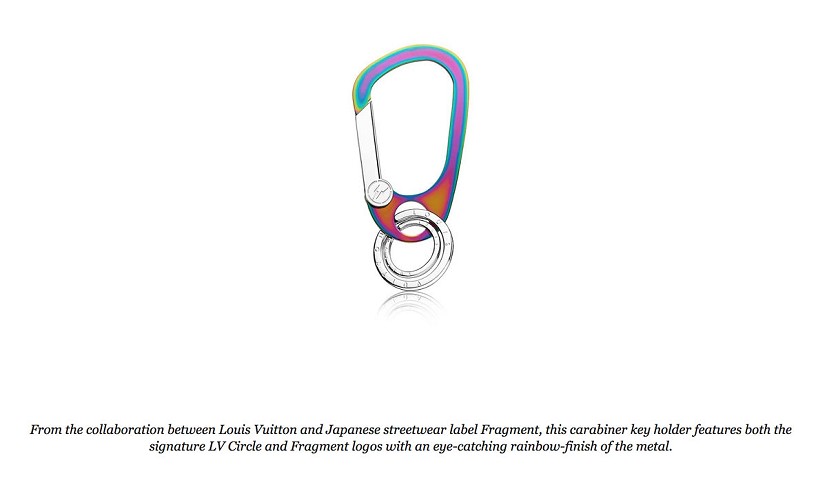
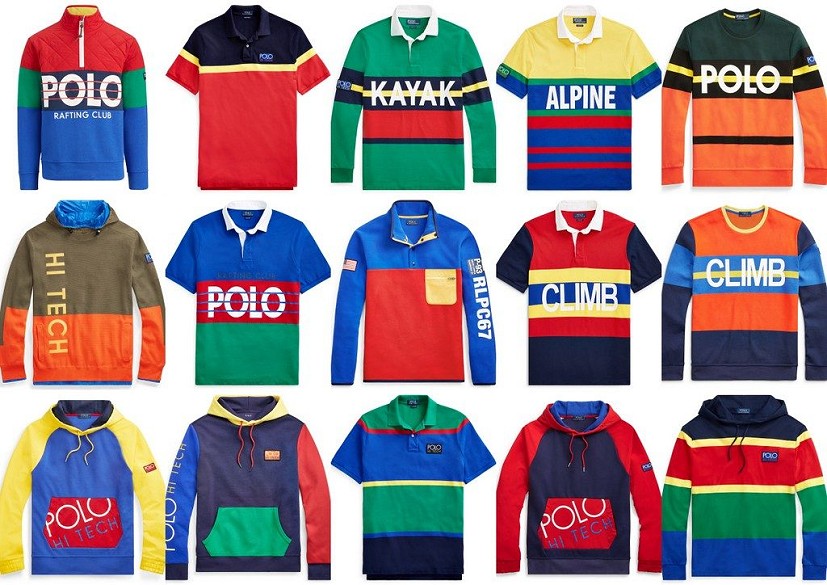
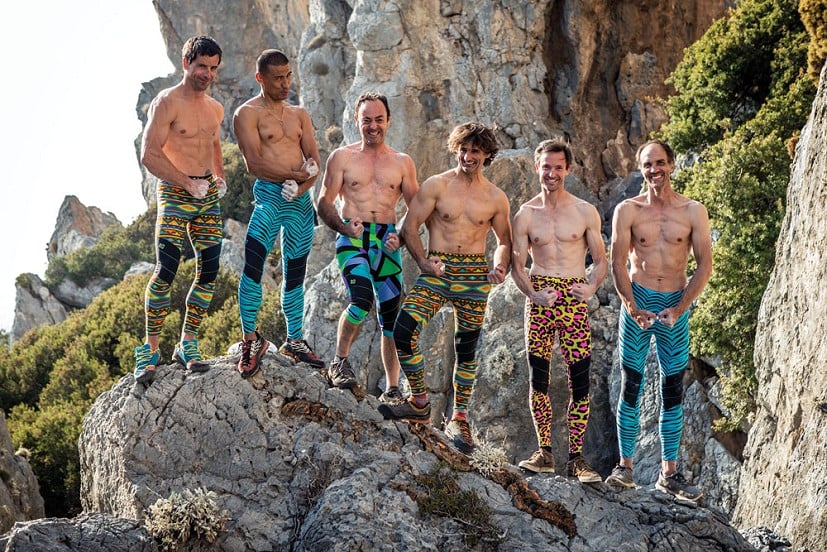

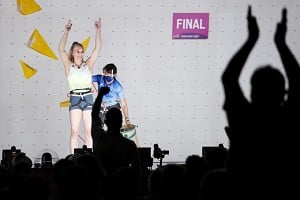

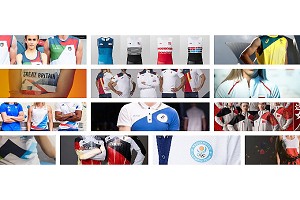
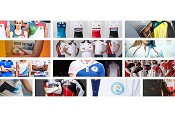








Comments
I remember a time when Crispin Waddy was camping down in the Leap dressed in rags. It inspired me and my mates to have an informal competition to see who could dress like Crispin when we went cragging, the scruffier the better., seems like a lifetime away now.
He still does. 😏
Still easy to spot a real climber though. They’ll be the one not wearing a face like slapped arse.
Hilarious stuff! We can be all high horse about this fashion non sense, but some prana or 3rd rock trousers prices are not a million miles away from those Ralph Laurent ones tbh
I can't take anything like this seriously until someone flounces down a catwalk in a pair of designer Ron Hills tracksters.
Then I'll know that climbing clothing is having a serious influence on fashion. Plus making Tracksters a cool fashion trend might be the only way to stop some of us wearing them.
T.